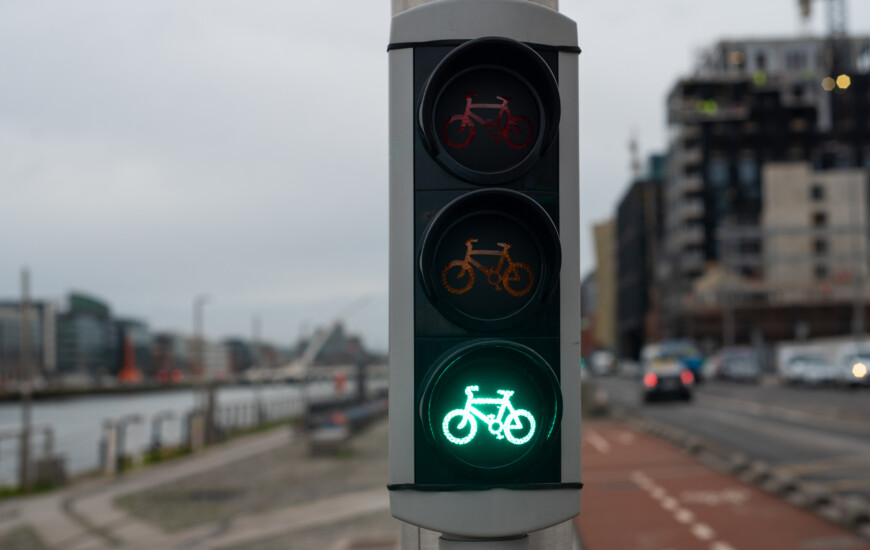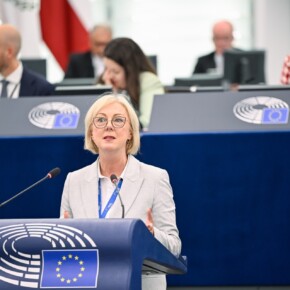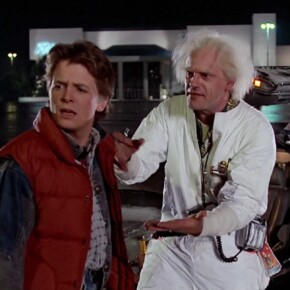NTA report finds walkers and cyclists take 530,000 cars off Dublin roads every day
Padraig Conlon 05 Mar 2024
Adults who walk and cycle in Dublin are taking 530,000 cars off local roads every day which equates to a tailback of 2,500 kilometres equivalent to over 9 times the distance from Dublin City to Cork City.
The National Transport Authority has today published the findings of its latest survey of walking, wheeling and cycling in the Dublin Metropolitan Area, which reveals that 71% of residents walk or wheel (meaning the use of a wheelchair or mobility scooter) at least five times a week, an increase from 64% in 2021, while 25% of residents cycle at least once a week.
The Walking and Cycling Index provides the largest-ever assessment of walking, wheeling, and cycling in Ireland.
It is delivered in collaboration with local authorities in the Dublin Metropolitan Area, the National Transport Authority and the sustainable transport charity Sustrans.
Alongside the Dublin Metropolitan Walking and Cycling Index, the Cork, Limerick Shannon, Galway and Waterford Metropolitan Areas are also publishing Index reports today for the first time.
18 city regions in the UK, including Liverpool, Manchester, and Glasgow are also publishing their reports today.
The Dublin Metropolitan Area Walking and Cycling Index is based on an independent demographically representative survey of more than 1,100 residents from across Dublin metropolitan area, aged 16 and above, not just those who walk, wheel or cycle.
The Dublin Metropolitan Area covers an area from Donabate in Fingal to Greystones in County Wicklow in the south, and as far west as Kilcock in County Kildare.
It reveals that 74% in favour of additional investment in walking and wheeling up from 61% in 2021 and 66% of residents are in favour of additional investment in cycling up from 63% in 2021, this contrasts with 24% who would like to see additional investment for driving down from 37% in 2021.
This comes amid a growing demand for active travel with 49% expressing their desire to walk, wheel more in the future, and 39% expressing a desire to cycle more.
Key findings from the 2023 Dublin Metropolitan Area Walking and Cycling Index:
- 71% of adult residents walk 5 or more days a week, while 47% use a car 5 or more days a week
- 25% of adults cycle at least once a week.
- 72% of residents support building cycle tracks physically separated from traffic and pedestrians even where that means less room for other traffic.
- Every day those who walk and cycle takes nearly 530,000 cars off the road in the Dublin Metropolitan Area. If these cars were all in a traffic?jam?it?would?tail?back 2,500 kilometres equivalent to over 9 times the distance from Dublin City to Cork City.
- Residents walking, wheeling and cycling create an annual economic benefit for individuals and the Dublin Metropolitan Area of €2.39 billion.
- Walking, wheeling and cycling in the Dublin Metropolitan Area saves the HSE €64.5 million equivalent to the cost of over 1,170,000 GP appointments.
- Those walking and cycling instead of driving, save greenhouse gas emissions equivalent to 1.69 million flights from Dublin Airport to London Heathrow Airport.
- There is a €1.48 net economic benefit for each km cycled instead of driven and €1.01 net economic benefit for each km walked instead of driven.
- Across the 23 city regions in the Index, the Dublin Metropolitan Area has one of the highest levels of residents walking, wheeling or cycling 5 days a week or more
- There has been a large increase in older residents engaging in active travel – 74% of residents aged over 66 now walk or wheel at least 5 days a week, up from 54% in 2021, and 12% of residents aged over 66 cycle at least once a week, up from 10% in 2021.
Environmental Benefits
Every day nearly 530,000 return walking and cycling trips are?made?daily?in?the Dublin Metropolitan Area by residents who could have used a car.
If these cars were all in a traffic?jam?it?would?tail?back 2,500 kilometres equivalent?to?over 9 times the?distance?from Dublin to Cork City.
The report also found that walking, wheeling and cycling save 120,000 tonnes of greenhouse gas emissions in Dublin each year, which is equivalent to about 1,690,000 residents taking flights from Dublin Airport to London Heathrow Airport.
Health Benefits and Inclusivity
The benefits of walking and cycling to the Dublin Metropolitan Area are outlined in the report, with the physical activity benefits of walking, wheeling and cycling preventing 4,373 serious long-term health conditions annually, valued at approx. €64.5 million – equivalent to the cost of over 1,170,000 GP appointments.
The Index showed that residents’ travel choices and their perceptions of walking, wheeling, and cycling vary between different groups.
It found that 64% of residents with a disability walk or wheel at least five days a week in Dublin, up from 53% in 2021, while 71% of residents without a disability walk or wheel.
17% of residents with a disability cycle at least once a week compared to 26% without.
While 72% of women and 69% of men walk or wheel at least five days a week, there is a larger gender gap when it comes to cycling, with 35% of men cycling at least once a week, compared with 16% of women.
There has been a welcome increase in older residents engaging in active travel – 74% of residents aged 66+ walk or wheel at least 5 days a week, up from 54% in 2021, and 12% of residents aged 66+ cycle at least once a week, up from 10% in 2021.
What residents say will help them walk or cycle more
When asked what would help them walk or wheel more, Dublin Metropolitan Area residents want better footpath surfaces including dropped kerbs at crossing points, nicer places along streets to stop and rest, and more things to see and do close to home, like cafés or entertainment venues.
When asked what would help them cycle more, residents want infrastructural improvements such as traffic-free paths through parks or greenways, signed cycle routes along quieter streets, and cycle tracks along roads physically separated from traffic and pedestrians.
There is evidence too that residents support the development of more protected cycle infrastructure within the Dublin Metropolitan Area, with 72% of residents supporting building more cycle tracks physically separated from traffic and pedestrians, even where that means less room for other traffic.
Creating a better place to live
Dublin residents also recognise the importance of liveable neighbourhoods. 73% agree that increasing space for residents socialising, walking, wheeling, and cycling on their local main street would improve their local area.
82% of residents support creating neighbourhoods where groups of streets, bordered by main roads, where ‘through’ motor vehicle traffic is greatly reduced – known as low traffic neighbourhoods.
87% support the creation of 20-minute neighbourhoods – neighbourhoods where it is easy for people to meet most of their everyday needs in a 20-minute return walk.
Economic benefits of active travel
The report also found that walking and cycling create an annual economic benefit for individuals and the Dublin Metropolitan Area of €2.39billion.
This includes €1.48 of a net economic benefit for each km cycled instead of driven and €1.01 benefit of each km walked instead of driven.
These costs were determined through an analysis of travel time, vehicle operating costs, health benefits, air quality and taxation.
Anne Graham, CEO of the NTA said: “As part of the largest survey into walking, wheeling, and cycling in Ireland, we’re delighted to publish the third Dublin Walking and Cycling Index. Over the past few years, the NTA has been working with local authorities across the country, including in Dublin, to deliver safe pedestrian and cycle infrastructure that encourages more people to engage in active travel.
“It’s clear from the latest Index that more people in our capital city want to cycle and walk each day. 530,000 return active travel trips are made daily in the Metropolitan Area by people who could have used a car.
“These trips play a vital role in helping to create a more sustainable and liveable city.
“It is also encouraging to see residents express a stronger preference than ever, for continued investment, in both active travel and public transport in the region.
“By encouraging people to make active travel a part of their daily journey, we can all play our part in creating a more sustainable future. The NTA will continue to accelerate our efforts to roll out walking and cycling infrastructure in Dublin and other cities across Ireland.”
The Dublin Metropolitan Area Walking and Cycling Index can be accessed here.











